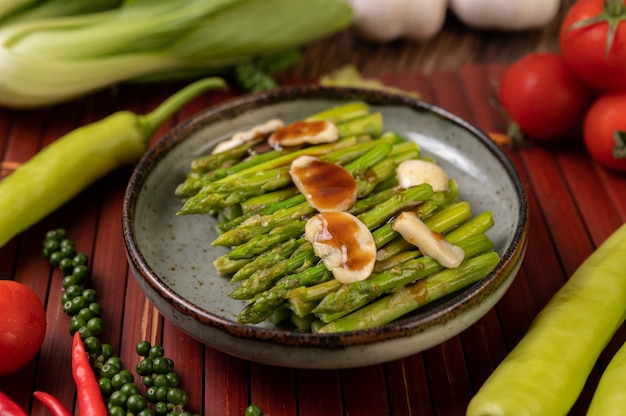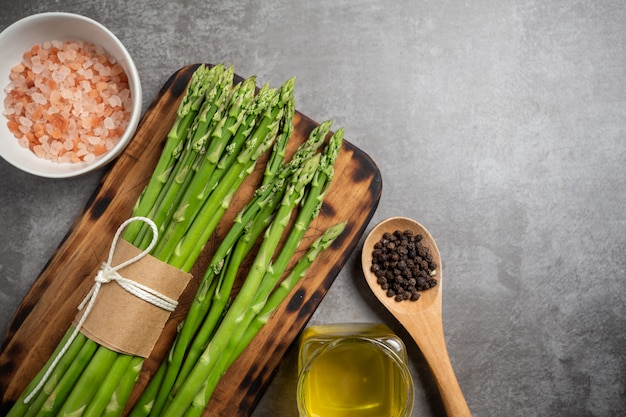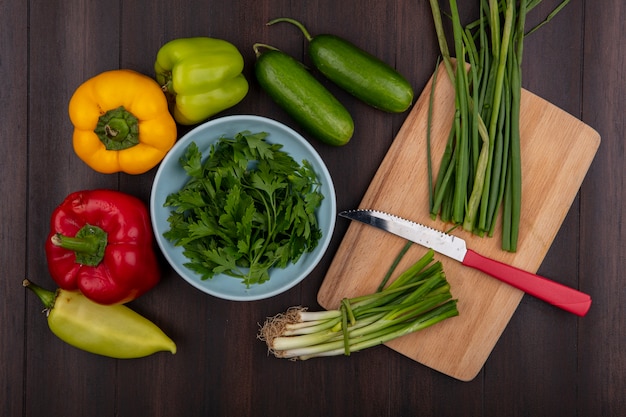I've always been a bit of a creature of habit when it comes to cooking. I tend to stick to the same few recipes, because they're tried and tested, and I know they'll always turn out well. But recently, I've been trying to branch out a bit and experiment with new flavours and techniques. One of the recipes I've been particularly enjoying is a simple asparagus skillet. It's so easy to make, it's packed with flavour, and it's ready in just a few minutes. Honestly, it's become a real staple in my kitchen, and I think it will be for you, too.
(Part 1) The Magic of Asparagus

I have to admit, I used to be a bit of an asparagus snob. I only ate it during asparagus season, because I thought it had to be super fresh to be any good. But then I discovered that you can actually get decent asparagus year-round, and it's really worth seeking out. It's such a versatile vegetable, and it can be cooked in so many different ways. I love it roasted, grilled, and of course, in a skillet.
A Taste of Spring
You know that feeling when you're biting into something that's just bursting with fresh flavour? That's what asparagus is all about. It's got this earthy, slightly sweet flavour that's just so satisfying. And when it's cooked just right, it has this lovely, tender texture that melts in your mouth. It's like a little taste of spring, even if it's the middle of winter. The flavour of asparagus can vary depending on the variety, the season, and even the soil it's grown in. Some asparagus has a more pronounced earthy flavour, while others are more subtly sweet. Personally, I love the delicate sweetness of thinner asparagus spears, which I find are more tender and cook more quickly.
nutritional powerhouse
Asparagus isn't just about flavour, it's also packed with nutrients. It's a good source of vitamin K, which is crucial for blood clotting and bone health. It's also a great source of folate, a B vitamin that plays a vital role in cell growth and development. And let's not forget about fiber, which is essential for digestive health. Asparagus is also low in calories and a good source of antioxidants, which help protect your cells from damage. So, not only does it taste good, it's good for you too - what more could you ask for?
(Part 2) Why Skillet Cooking is My Go-To

I'm not a chef, so I'm all about simple and straightforward cooking methods. And that's where my trusty skillet comes in. It's the most versatile piece of cookware in my kitchen, and it's perfect for everything from stir-fries to pasta dishes to, you guessed it, asparagus skillets.
The Skillet Advantage
Here's the thing, skillets are incredibly easy to use. They heat up quickly and evenly, which is essential for cooking asparagus to perfection. You want to make sure the asparagus cooks evenly and gets that beautiful, slightly caramelized texture without burning. Plus, they're great for cooking small batches, which is perfect for a quick weeknight meal. And let's not forget about clean-up. A good quality skillet can be easily washed or thrown in the dishwasher, so you don't have to spend ages scrubbing pots and pans.
Skillet Variety
Skillets come in all shapes and sizes. I've got a couple of different sizes in my kitchen, and I use them for different things. My smaller skillet is perfect for just one or two servings, while my larger skillet is ideal for cooking meals for the whole family. And they're not just for stovetops! You can even use your skillet in the oven, which is great for roasting vegetables or baking pizzas. A cast iron skillet is a classic choice for its even heating and durability. Stainless steel skillets are also a good option for their versatility and ease of cleaning. No matter what type of skillet you choose, make sure it's well-seasoned to prevent food from sticking.
(Part 3) The Essential Ingredients

Now, let's talk about the ingredients you'll need to make your asparagus skillet. It's a simple recipe, so you won't need a lot of ingredients, but each one plays an important role in creating the final flavour.
The Star of the Show: Asparagus
Of course, you need asparagus! I usually aim for about 1 pound of asparagus per two people. You can use any type of asparagus, but I prefer thin asparagus because it cooks faster and more evenly. The thickness of the asparagus will affect the cooking time, so adjust accordingly. Thicker asparagus spears might need an extra minute or two of cooking time. When choosing asparagus, look for spears that are firm and crisp, with tightly closed tips. Avoid asparagus that is limp or has wilted tips.
A Splash of Flavour: Olive Oil
Olive oil is a must-have for this recipe. It adds a delicious flavour to the asparagus, and it helps to create a nice crispy texture. Just use a couple of tablespoons, you don't need much. Choose a good quality olive oil, preferably extra virgin olive oil, for its rich flavour and health benefits. If you're sensitive to olive oil, you can substitute it with avocado oil or grapeseed oil.
The Secret Weapon: Garlic
Garlic is the secret ingredient that takes this dish to the next level. I usually use 2-3 cloves, but feel free to adjust to your taste. Make sure to mince the garlic finely, so it can release its flavour evenly. You can also use garlic powder for convenience, but freshly minced garlic offers a more intense flavour.
A Hint of Lemon
Lemon juice is another key ingredient that adds a bright and refreshing flavour to the dish. Just a squeeze of fresh lemon juice will do the trick. You could also use lemon zest, but I find the juice to be more than enough. Lemon juice also helps to balance the sweetness of the asparagus and adds a touch of acidity. If you don't have fresh lemon juice, you can use a tablespoon of bottled lemon juice.
A Pinch of Salt and Pepper
Don't forget to season your asparagus! A pinch of salt and pepper will enhance the flavours and bring out the best in the asparagus. I always taste the asparagus as I'm cooking, and I adjust the seasoning accordingly. Use a good quality sea salt for its subtle flavour and mineral content. Freshly ground black pepper will add a nice spicy kick to the dish.
(Part 4) A Step-by-Step Guide
Now that you have all the ingredients ready, it's time to start cooking! This recipe is so easy, it's almost impossible to mess up. Just follow these simple steps, and you'll be enjoying a delicious asparagus skillet in no time.
Step 1: Prep the Asparagus
First things first, wash and trim your asparagus. I usually trim off the tough, woody ends. You can also snap them off, but be careful not to snap them too short. Next, you can chop the asparagus into bite-sized pieces. I like to leave some of the asparagus spears whole, to give the dish some variety. This step is important to ensure that the asparagus cooks evenly and doesn't have any tough, fibrous ends. You can also peel the asparagus if you prefer a more delicate texture.
Step 2: Heat the Skillet
Place your skillet on the stovetop and heat it over medium heat. You want the skillet to be hot enough to sear the asparagus, but not so hot that it burns. You can test the heat of the skillet by adding a drop of water; it should sizzle immediately.
Step 3: Add the Olive Oil
Once the skillet is hot, add your olive oil. You can swirl it around to coat the bottom of the skillet.
Step 4: Sauté the Garlic
Add your minced garlic to the hot olive oil. Cook for about 30 seconds, stirring constantly, until fragrant. Don't let the garlic burn! The garlic should release its aroma and turn slightly golden.
Step 5: Add the Asparagus
Add your prepared asparagus to the skillet. Stir to coat the asparagus in the garlic and olive oil. You can also toss it a couple of times to make sure all the pieces are evenly coated.
Step 6: Cook the Asparagus
Cook the asparagus for about 3-5 minutes, stirring occasionally. You want the asparagus to be tender-crisp, not overcooked. It should still have a slight bite to it. The cooking time will vary depending on the thickness of the asparagus spears. If you're using thinner asparagus, it will cook faster. You can also check for doneness by piercing an asparagus spear with a fork; it should be tender but still have a slight resistance.
Step 7: Add the Lemon Juice
Once the asparagus is cooked, squeeze the lemon juice over the asparagus. You can also add a pinch of salt and pepper at this point, if needed. The lemon juice adds a bright acidity that balances the sweetness of the asparagus.
Step 8: Serve and Enjoy
Serve your asparagus skillet immediately. You can enjoy it as a side dish with grilled chicken, fish, or steak, or you can add some protein to the skillet for a complete meal.
(Part 5) Variations and Adaptations
This basic asparagus skillet recipe is a great starting point, but don't be afraid to experiment with different variations. Here are a few ideas to get you started.
Add Some Spice
For a kick of flavour, add a pinch of red pepper flakes to the skillet. Or, you can try adding some ground cumin or paprika. Just remember to add the spices along with the garlic. The spices will infuse the oil and add a warm, savory note to the asparagus.
Go Cheesy
Love cheese? Sprinkle some grated Parmesan or Pecorino Romano cheese over your asparagus skillet before serving. You can also add some crumbled goat cheese or feta cheese for a tangy twist. The cheese will melt over the asparagus and create a creamy, flavorful topping.
Add Some Crunch
To add some texture to your asparagus skillet, try adding some toasted nuts or seeds. Slivered almonds, pine nuts, or sunflower seeds are all good options. Toast them in a dry skillet over medium heat until golden brown. Add them to the asparagus just before serving. The toasted nuts or seeds will provide a contrasting crunch to the soft asparagus.
Get Creative with Herbs
Fresh herbs are a great way to add flavour and freshness to your asparagus skillet. Try adding chopped parsley, chives, or dill. You can also add some fresh thyme or rosemary. Add the herbs to the skillet during the last minute of cooking. Fresh herbs add a burst of aroma and flavour to the dish. You can also use dried herbs, but use a smaller amount as they are more concentrated.
Make it Hearty
For a more filling meal, add some cooked protein to your asparagus skillet. Shrimp, chicken, or tofu would all be delicious additions. You can also add some cooked quinoa or rice for a complete meal. The protein will add a satisfying element to the dish and make it more filling.
(Part 6) Serving Suggestions
Your asparagus skillet is ready to be enjoyed! Here are a few serving suggestions to inspire your culinary creativity.
Side Dish Delight
This simple and flavourful dish is perfect as a side dish for grilled meats, chicken, fish, or tofu. The fresh, vibrant asparagus complements the richness of grilled proteins perfectly.
Protein Powerhouse
Add a protein source to your skillet for a complete and satisfying meal. Toss in cooked shrimp, chicken breast, or pan-fried tofu for a healthy and flavourful dinner. You can also add some cooked sausage or bacon for a more indulgent meal.
Fresh and Vibrant Salad
Transform your asparagus skillet into a light and refreshing salad by tossing it with fresh greens, cherry tomatoes, red onions, and a simple vinaigrette dressing. You can also add some crumbled feta cheese or toasted walnuts for added flavour and texture.
Comforting Bowl of Goodness
For a warm and comforting meal, serve your asparagus skillet with cooked quinoa or rice. Add a sprinkle of your favourite cheese or a drizzle of balsamic glaze for an extra touch of flavour. You can also add a poached egg or a dollop of Greek yogurt for added protein and creaminess.
(Part 7) FAQs
You have questions, I have answers! Let's address some common questions about this delicious recipe.
1. Can I use frozen asparagus?
Absolutely! If fresh asparagus is unavailable, frozen asparagus works just as well. Just make sure to thaw it completely before cooking. You may want to reduce the cooking time slightly as frozen asparagus tends to be more tender. Frozen asparagus is a good option if fresh asparagus is not in season or if you're short on time.
2. What can I substitute for olive oil?
If you're looking for an alternative to olive oil, avocado oil or grapeseed oil would be great options. They have a neutral flavour and a high smoke point, which makes them suitable for high-heat cooking. You can also use butter, but it will add a richer flavour to the dish.
3. Can I make this recipe ahead of time?
You can prepare the asparagus beforehand by washing, trimming, and chopping it. Store it in an airtight container in the refrigerator. However, it's best to cook the asparagus right before serving to ensure its freshness and crisp texture. You can also cook the asparagus ahead of time and reheat it gently before serving.
4. What happens if I overcook the asparagus?
If you overcook asparagus, it will become mushy and lose its flavour. It's best to cook it until it's tender-crisp, with a slight bite to it. You can always adjust the cooking time depending on the thickness of the asparagus spears. You can also check for doneness by piercing an asparagus spear with a fork; it should be tender but still have a slight resistance.
5. Can I add other vegetables to the skillet?
Absolutely! This recipe is a blank canvas for your culinary creativity. Feel free to add other vegetables that you enjoy, such as cherry tomatoes, red onion, or bell peppers. Just make sure to add them towards the end of the cooking time so that they don't overcook. You can also add other vegetables like mushrooms, zucchini, or spinach.
(Part 8) Enjoy the Flavours
And there you have it! A simple, delicious, and ready-in-minutes asparagus skillet recipe that's sure to become a favourite in your kitchen. I hope you enjoy it as much as I do.
Remember, cooking should be fun and enjoyable. Don't be afraid to experiment with different flavours and techniques. And most importantly, enjoy the process!
Happy cooking!
Everyone is watching

Prime Rib Roast Cooking Time Chart: Per Pound Guide
Cooking TipsPrime rib roast. Just the name conjures images of lavish dinners, crackling fires, and hearty laughter. It’s ...

How Long to Bake Potatoes in the Oven (Perfect Every Time)
Cooking TipsBaked potatoes are a staple in my kitchen. They're incredibly versatile, delicious, and surprisingly easy to m...

Perfect Rice Every Time: The Ultimate Guide to Cooking Rice
Cooking TipsAs a self-proclaimed foodie, I've always been a bit obsessed with rice. It's the foundation of countless cuisi...

The Ultimate Guide to Cooking Asparagus: Tips, Techniques, and Recipes
Cooking TipsAsparagus. The mere mention of this spring delicacy conjures up images of vibrant green spears, crisp and burs...

Ultimate Guide to Cooking the Perfect Thanksgiving Turkey
Cooking TipsThanksgiving. Just the word conjures up images of overflowing tables laden with delicious food, the scent of r...
